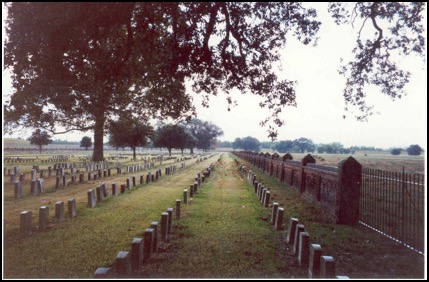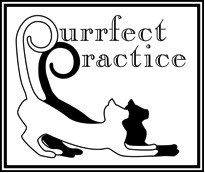Louisiana
Chalmette Battlefield Next
27/02/24 11:07 Filed in: History
Another one of the six battlefields one can visit and we have is in Louisiana, just outside New Orleans…
Located downriver from New Orleans, Chalmette Battlefield was the site of the last great battle of the War of 1812, fought between the U.S. and Great Britain. Although the Treaty of Ghent was signed in late 1814, the war continued. On January 8, 1815, General Andrew Jackson assembled troops from across Louisiana and the southeastern U.S. to defeat the British military and prevent them from gaining control of a critical port on the Mississippi River. The Battle of New Orleans was hailed as the final victory in the “Second War of Independence,” and for decades it was celebrated as a national holiday, much like the Fourth of July. A visit to Chalmette Battlefield offers the chance to walk in the footsteps of General Jackson (who went on to become the seventh U.S. President) and his troops. It contains a reconstructed American rampart, an original home from the 1830s, and the stunning,100-foot-high Chalmette Monument. Delve further into the history of the battle site via films and exhibits at the visitor center, where you’ll find outdoor exhibits, self-guided tours, and daily ranger talks. Also of interest is Chalmette National Cemetery: Established during the Civil War in 1864, it shelters more than 14,000 graves of Americans, dating from the War of 1812 to the Vietnam War.

Located downriver from New Orleans, Chalmette Battlefield was the site of the last great battle of the War of 1812, fought between the U.S. and Great Britain. Although the Treaty of Ghent was signed in late 1814, the war continued. On January 8, 1815, General Andrew Jackson assembled troops from across Louisiana and the southeastern U.S. to defeat the British military and prevent them from gaining control of a critical port on the Mississippi River. The Battle of New Orleans was hailed as the final victory in the “Second War of Independence,” and for decades it was celebrated as a national holiday, much like the Fourth of July. A visit to Chalmette Battlefield offers the chance to walk in the footsteps of General Jackson (who went on to become the seventh U.S. President) and his troops. It contains a reconstructed American rampart, an original home from the 1830s, and the stunning,100-foot-high Chalmette Monument. Delve further into the history of the battle site via films and exhibits at the visitor center, where you’ll find outdoor exhibits, self-guided tours, and daily ranger talks. Also of interest is Chalmette National Cemetery: Established during the Civil War in 1864, it shelters more than 14,000 graves of Americans, dating from the War of 1812 to the Vietnam War.

Comments
Cajun or Creole
02/08/23 19:12 Filed in: Culture
If you go to New Orleans for Mardi Gras or other reasons, or spend some time in Louisiana you will hear the terms Cajun or Creole. What is the difference?
The French founded New Orleans in 1718, naming it for the Duke of Orleans. At that time, the term “Creole” referred to non-Indigenous people born in colonized countries of the Americas. This was the era of enslavement, so early on, the term was exclusively for white people. In New Orleans, that meant the children of the white French ruling class.
While “Creole” is geographically associated with “Cajun,” they are not the same. Everywhere around Louisiana, you’ll also hear about Cajun food and music, but this word derives from les Acadiens, the name for the French-speaking people who lived along the eastern coast of Canada, then a French colony. However, when the British conquered Acadia in the 1700s, renaming it Nova Scotia and New Brunswick, the French (les Acadiens) were pushed out.
Some of les Acadiens went back to France, and others went to the French Caribbean. But the Spanish, who had just acquired French-speaking Louisiana, sent emissaries inviting them to come to Louisiana and help fend off the rival British colonists.
The new arrivals didn’t have the means to join the established class of French in New Orleans or the plantation owners. They mixed with the Indigenous people and free Blacks and spread throughout the south, mainly near water, in swamplands, along levees and bayous, and on the coastal marshes.
Les Acadiens turned into “Cajuns,” and these people settled largely in rural areas and retained a distinct culture from the New Orleans-based Creoles. Food is, naturally, a major distinguishing factor in any culture. Two simple ways to distinguish between a Cajun and Creole dish: Cajuns rarely use tomatoes and their food is spicier. A Cajun jambalaya, the Louisiana version of paella, is brown, not red, like the Creole style. Many Cajuns still speak a nonstandard form of French, but it is different from Louisiana Creole.
The French founded New Orleans in 1718, naming it for the Duke of Orleans. At that time, the term “Creole” referred to non-Indigenous people born in colonized countries of the Americas. This was the era of enslavement, so early on, the term was exclusively for white people. In New Orleans, that meant the children of the white French ruling class.
While “Creole” is geographically associated with “Cajun,” they are not the same. Everywhere around Louisiana, you’ll also hear about Cajun food and music, but this word derives from les Acadiens, the name for the French-speaking people who lived along the eastern coast of Canada, then a French colony. However, when the British conquered Acadia in the 1700s, renaming it Nova Scotia and New Brunswick, the French (les Acadiens) were pushed out.
Some of les Acadiens went back to France, and others went to the French Caribbean. But the Spanish, who had just acquired French-speaking Louisiana, sent emissaries inviting them to come to Louisiana and help fend off the rival British colonists.
The new arrivals didn’t have the means to join the established class of French in New Orleans or the plantation owners. They mixed with the Indigenous people and free Blacks and spread throughout the south, mainly near water, in swamplands, along levees and bayous, and on the coastal marshes.
Les Acadiens turned into “Cajuns,” and these people settled largely in rural areas and retained a distinct culture from the New Orleans-based Creoles. Food is, naturally, a major distinguishing factor in any culture. Two simple ways to distinguish between a Cajun and Creole dish: Cajuns rarely use tomatoes and their food is spicier. A Cajun jambalaya, the Louisiana version of paella, is brown, not red, like the Creole style. Many Cajuns still speak a nonstandard form of French, but it is different from Louisiana Creole.

